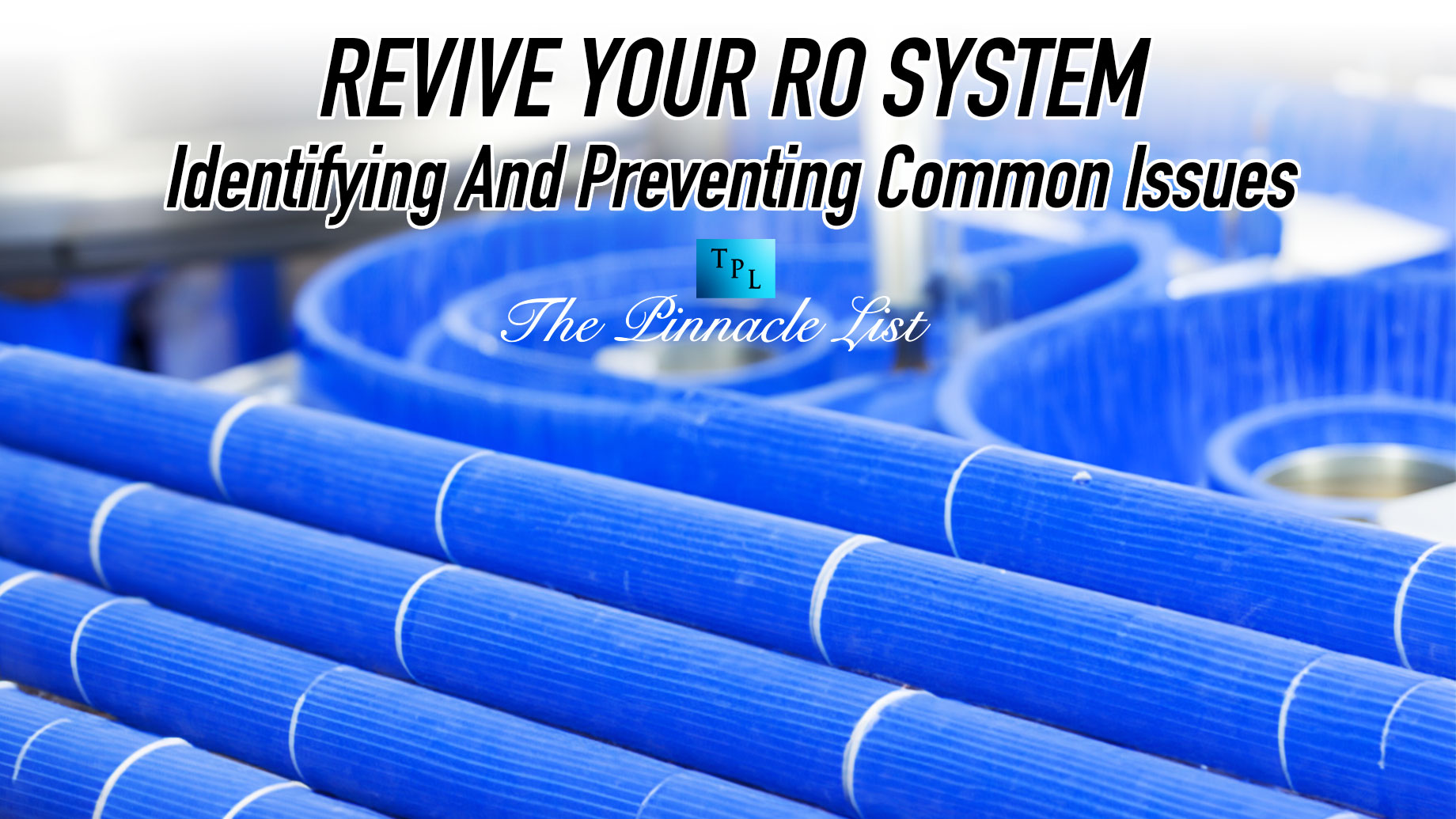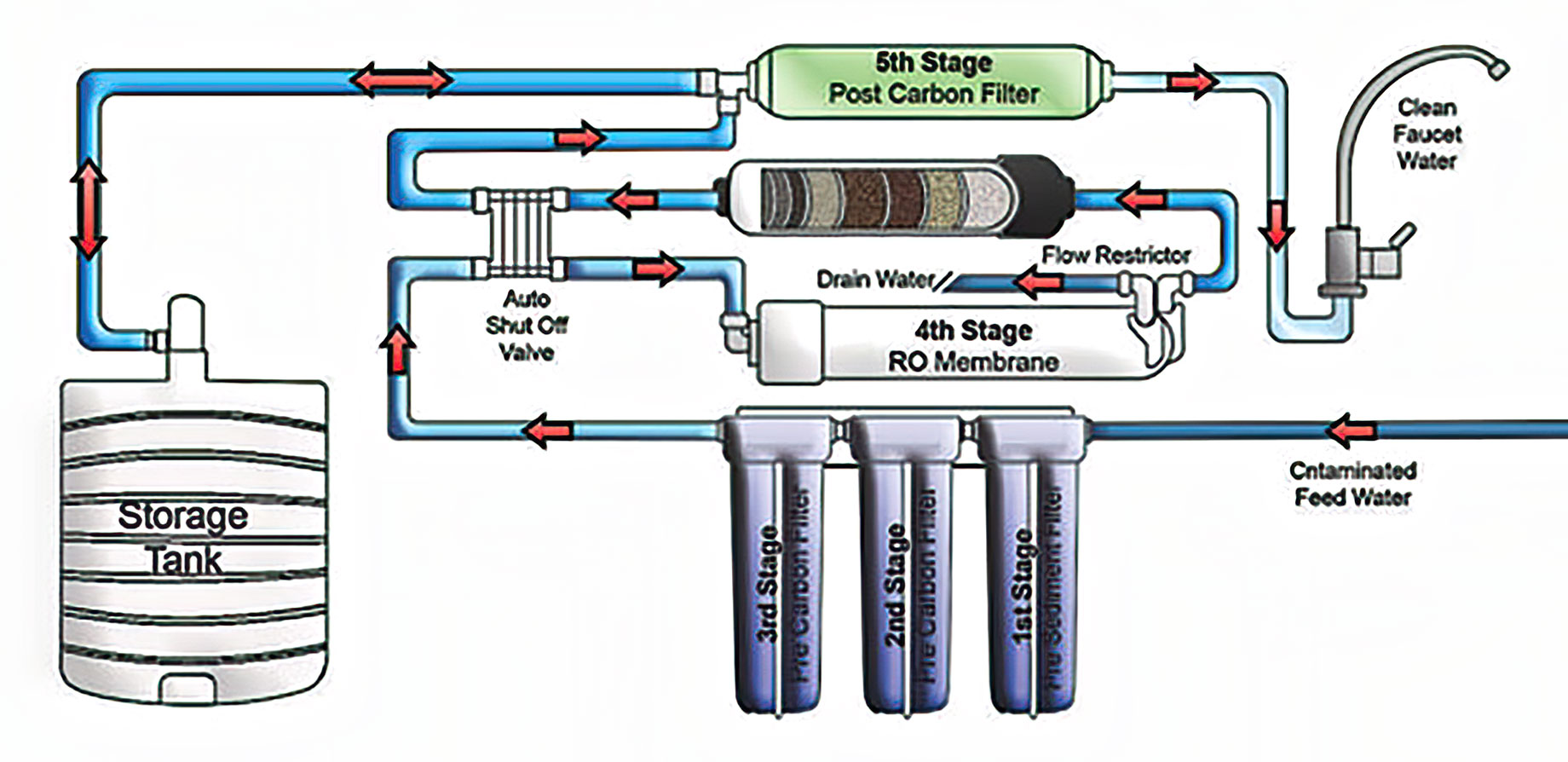
A reverse osmosis system leverages an advanced water purification technique that reduces high chemical contaminants in municipal water. By channeling your drinking water through microscopically RO membranes with pore sizes of about 0.0001 microns, the system can directly target and attract heavy metals, organic materials, or even salt.
However, poor RO system maintenance can degrade the membrane performance and lead to water fouling. Here is a guide on how to tell if the RO membrane is bad.
The Function of RO Membranes

With as many as 77% of Americans filtering tap water at home, water filtration systems, such as RO membranes, have become an important part of many households. Typically, they can filter up to 99% of dissolved substances, such as lead and asbestos, as well as 82 other additional contaminants. This includes larger particles, such as bacteria, chemicals, viruses, and other prevalent pollutants.
Additionally, these filters are incredibly effective when you need mineral-less water for specific uses. For instance, their filtration technology can get rid of municipal-added fluoride to make cooking taste better or ultra-purify the water for home aquarium use.
Common Issues with RO Membranes
Membrane Fouling
One of the issues that you might face with your filtration system is RO membrane fouling. This happens when mineral contaminants and larger pollutants build up on the membrane’s surface, reducing its effectiveness and ultimately clogging it. At the very least, this fouling can also result in fluctuating electricity bills because your system will be using more energy than usual to purify the water. And in the long haul, you might expose your family or employees at work to harmful contaminants that might carry waterborne disease-causing organisms.
Signs of a Bad RO Membrane
Signs of a fouled membrane include:
- Poor water quality: You may start to notice your system producing significantly low-quality permeate than you’re used to. If you can’t spot the difference immediately, check whether the membrane is showing poor salt rejection, especially if you’re using a colloidal foulant.
- Molds, accompanied by bad odor: This can emanate from organic pollutants. If the problem is mild, you might notice a slime-like substance clogging the pores.
- A visible build-up of solid mass on the filters; however, build-ups with lower chemical composition are not harmful
Troubleshooting RO Membrane Issues
Regular Cleaning of RO Membranes
Routine cleaning of RO membranes is essential, especially if you’re going to prevent prevalent issues like fouling and clogging, as well as optimize your system’s overall performance. By cleaning the membranes regularly while following the manufacturer’s guide, you’ll get rid of accumulated debris pr contaminates, enabling the system to continue purifying water effectively.
However, it’s important to note that “regular” is relative, and the frequency of cleaning the filters varies from one household to another. For example, you might need to clean membranes more often if your household’s water usage pattern is high. The same also applies if you’re connected to a highly contaminated water source, such as a borehole.
Steps to Clean Fouled Membranes
While there are various membrane cleaning techniques, here are the basic steps that every homeowner who uses an RO water filtration system should follow:
- Turn off the water feeder supply: Ensure that you close the water feeds to the system so that you can have an easy time.
- Prepare an appropriate cleaning solution: Refer to the manufacturer’s guidelines and mix an ideal cleaning solution using the recommended chemicals.
- Clean the membranes: Soak the filters in the cleaning solution for a duration recommended in the manufacturer’s guidelines. It’s important not to exceed the time as this can lead to damage.
- Rinse thoroughly with clean water: Use distilled water to rinse chemical and physical residues from each filter.
- Reinstallation: Reinstall the filtration media, following the manufacturer’s guidelines.
RO System Maintenance
Maintaining your RO system is essential, especially if you’re going to optimize its efficiency and prolong its lifespan. For effective membrane maintenance, you need to regularly check the pre-filters and replace them as much as needed. Moreover, pay attention and ensure that they are not too high or too low to continue drinking ultra-purified water.
Preventing RO Membrane Issues
Regular Replacement
A proactive step toward preventing issues in your water filtration system is reverse osmosis membrane replacement. By doing the replacement as early as needed, you’ll not only mitigate performance issues but also ensure that the system constantly removes impurities and all sorts of contaminants from your drinking water. This translates to a healthy family all-around the year.
Proper Water Filtration
Another way of reducing issues in your reverse osmosis system is by ensuring proper water filtration. This can be achieved by installing advanced pre-filters with activated carbon or sediment filtration techniques that prevent clogging. Alternatively, you can leverage other water filtration techniques, such as UV sterilization, to further enhance the performance and longevity of your system.
Conclusion
Proactive troubleshooting doesn’t only maintain your RO system but also ensures that it functions optimally. And if you’re wondering what the membrane does, it ensures that your family has access to purified water around-the-clock. With that in mind, monitor it closely and fix issues as soon as they arise.